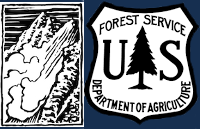Taylor Forking
This was a nice walk to stretch the legs in the Taylor Fork. My observations largely aligned with what GNFAC fxers observed in the same drainage on the same day.
Deep temperature inversion was present, it was 3 F when I left the car at 10 in the morning, and I eventually climbed out of the cold pool of air around 8,200'. I stopped and dug a few roadside handpits on the drive in from 191, it was impressive how much additional faceting was occurring below the level of the inversion. Here, the snowpack consisted mostly of 20-30cm of facets (DH near ground), with a decomposing 4F ambient temp crust in the mid-pack. I had no stability concerns down low today, but this very weak lower-elevation snow will create problems with additional loading. With enough load I would expect to see frequent, long-running collapses as well as the potential for remotely triggering slides from long distances in valley bottom locations. Many low elevation slopes facing SSE-S-SW-WSW had lost much of their snow cover, but solar margins and anything tilted a bit away from the sun were holding snow.
Above the level of the inversion and continuing up into the alpine the snowpack looked a bit better, but not great. Faceting was less pronounced and I was unable to get ECTs to propagate in a pit dug in a relatively flat meadow at ~8,600' (which felt like a decent proxy for shaded slopes based on structure). However, shortly after leaving this pit I initiated a large collapse that traveled across an entire large meadow; the collapse was audible for over a second as it propagated. This collapse and the weak layer of concern in my pit is the widespread basal weak layer, buried beginning in mid-November. This was the only direct instability feedback from the snowpack I experienced this day.
In the alpine, snow surfaces were weathered and highly variable, presenting as a mish-mash of facets, crusts, thin wind skins, and stiffer, denser hard slabs from recent snowfall. None of these surfaces looked terrible, but I'd expect a quick load of snow+wind to find plenty of locations with collapsible weak layers capable of producing avalanches. I looked around for a place to dig and look at basal weakness but was unable to find anything of value due to this high degree of variability. There was a thin but widespread rime/humidity crust in the upper few cms of the snowpack that was present as high as I observed (11,000' +). I observed some cracking that had occurred previously in steep, heavily wind-loaded north-facing terrain. It was not perfectly clear if this cracking involved the weak layer near the ground or just the thinner, wind-drifted hard slab near the surface, but it seemed like it was more of a surficial problem.
